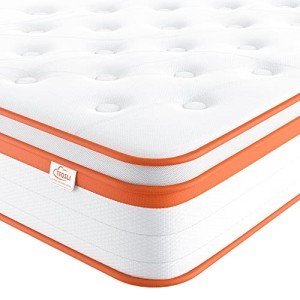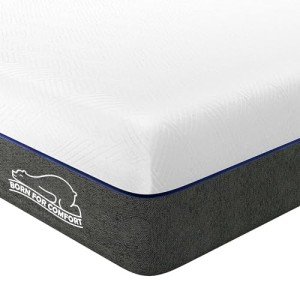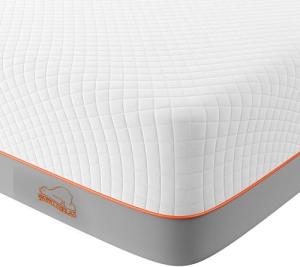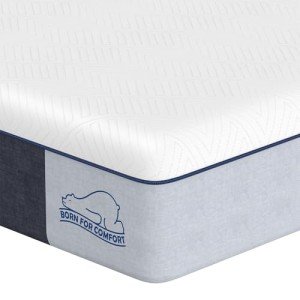When it comes to furnishing a home, particularly in spaces with limited room, the selection of bedding solutions can be a decisive factor in enhancing both comfort and functionality. Bunk beds, traditionally favored for their space-saving design, are commonly regarded as a practical choice for children’s rooms, guest rooms, or even compact adult spaces. However, the choice of mattress is equally important, with memory foam emerging as a top contender due to its unique comfort properties. This guide explores the benefits of using comfortable memory foam double mattresses specifically designed for bunk beds, offering guidance for potential buyers and answering common questions surrounding this topic.
Understanding Memory Foam
Memory foam is a viscoelastic material originally developed by NASA in the 1960s to improve the safety of aircraft cushions. Its properties allow it to contour to the shape of the body, providing support while alleviating pressure points. This quality makes memory foam an attractive option for a variety of sleeping arrangements, especially when considering the unique needs of bunk beds.
Benefits of Memory Foam Mattresses for Bunk Beds
-
Space Efficiency: Double mattresses offer ample sleeping space while maximizing vertical space, making them suitable for parent-child sleeping arrangements or hosting guests.
-
Comfort and Support: Unlike traditional mattresses, memory foam mattresses conform to the sleeper's body shape, distributing weight evenly. This results in a more restful sleep.
-
Reduced Motion Transfer: Memory foam beds minimize motion transfer, providing undisturbed sleep—ideal for children who share a bunk.
-
Hypoallergenic Properties: Memory foam is often resistant to dust mites and other allergens, thereby promoting healthier sleeping environments, particularly for allergy sufferers.
-
Durability: High-quality memory foam mattresses typically have a longer lifespan compared to standard spring mattresses, making them a good investment over time.
Choosing the Right Memory Foam Double Mattress for Bunk Beds
When selecting a memory foam double mattress for a bunk bed, several factors should be considered:
-
Thickness: Most bunk bed designs have a weight limit and headroom constraint. A thickness of 6 to 10 inches is usually effective for comfort without exceeding height restrictions.
-
Density: Higher density foam provides more support but may also be heavier and more prone to heat retention. Aim for a medium density if shared sleeping is anticipated.
-
Firmness Level: Personal preference plays a significant role in the perceived comfort of a mattress. Some prefer a softer feel, while others might require a firmer surface for adequate support.
-
Breathability: Opt for mattresses that include cooling gel or have breathable covers to prevent heat retention, especially in a shared sleeping space.
Top Memory Foam Double Mattresses for Bunk Beds
| Brand | Mattress Type | Thickness | Key Features | Price Range |
|---|---|---|---|---|
| Zinus Green Tea | Memory Foam | 8 inches | Cooling gel, CertiPUR-US Certified | £200 - £300 |
| Linenspa Hybrid | Memory Foam | 10 inches | Hybrid construction, plush feel | £250 - £350 |
| Tuft & Needle | Adaptive Foam | 8 inches | Breathable cover, excellent support | £300 - £400 |
| Lucid 10 Inch Gel | Gel Memory Foam | 10 inches | Gel-infused, hypoallergenic | £250 - £350 |
| Nectar Mattress | Memory Foam | 11 inches | Adaptive support, lifetime warranty | £500 - £600 |
Maintenance Tips for Memory Foam Mattresses
To prolong the lifespan and maintain the condition of a memory foam double mattress for bunk beds, consider the following maintenance tips:
- Rotate the mattress every 3-6 months to ensure even wear.
- Use a mattress protector to guard against spills and stains.
- Allow the mattress to air out for a few hours after unpacking to eliminate chemical odors.
- Clean stains promptly using a mild detergent and avoid soaking the foam.
Frequently Asked Questions (FAQs)
1. Can a memory foam mattress fit a bunk bed frame?
Yes, as long as the dimensions match the frame specifications. Standard double mattresses usually fit most typical bunk bed frames.
2. Are memory foam mattresses safe for bunk beds?
Yes, memory foam mattresses are safe for bunk beds, provided they are the correct thickness and weight is within the frame's limits.
3. How often should a memory foam mattress be replaced?
Generally, a quality memory foam mattress should last between 7-10 years. Signs of wear such as sagging or permanent indentations are indicators for replacement.
4. Do memory foam mattresses need a box spring?
No, memory foam mattresses do not require a box spring; they are designed to be placed directly onto a platform or slatted bed frame.
5. How do I clean a memory foam mattress?
Spot-clean with mild soap and water. Avoid soaking the mattress; instead, use a damp cloth to treat stains, and always allow it to air dry thoroughly.
The choice of a comfortable memory foam double mattress for bunk beds can significantly influence sleep quality. With their supportive properties, hypoallergenic nature, and resistance to motion transfer, memory foam mattresses are ideal for both children and adults sharing close sleeping quarters. Understanding the key features, maintenance tips, and top-rated options assists consumers in making informed purchasing decisions that align with their comfort needs and budget. With the right mattress, bunk beds can become a sanctuary for rejuvenating sleep, making the most of vertical space while ensuring well-being.






